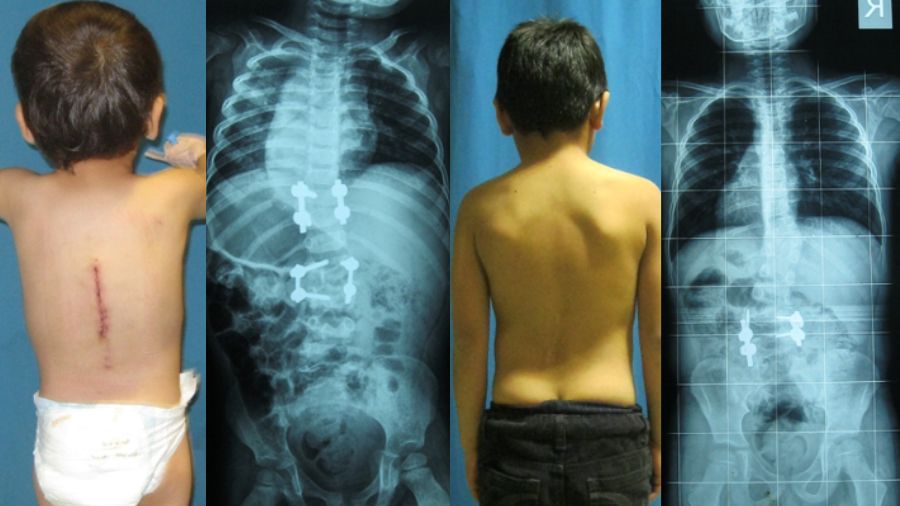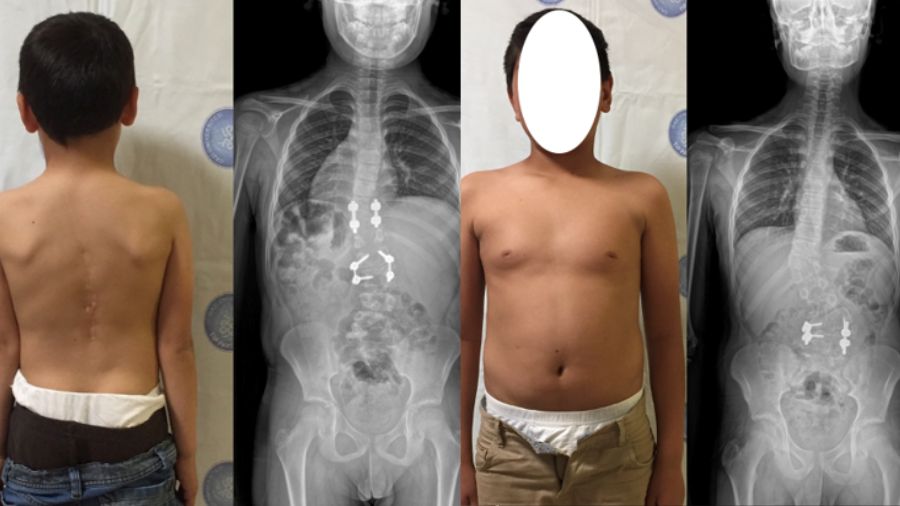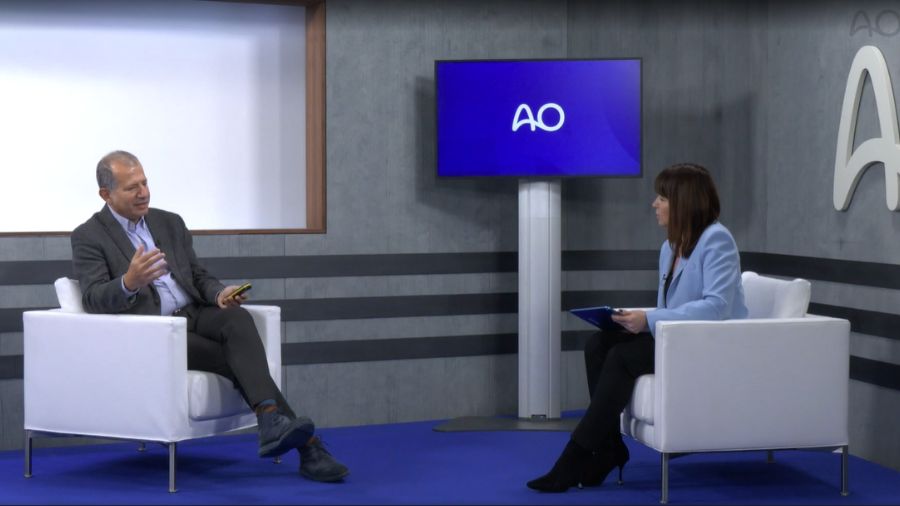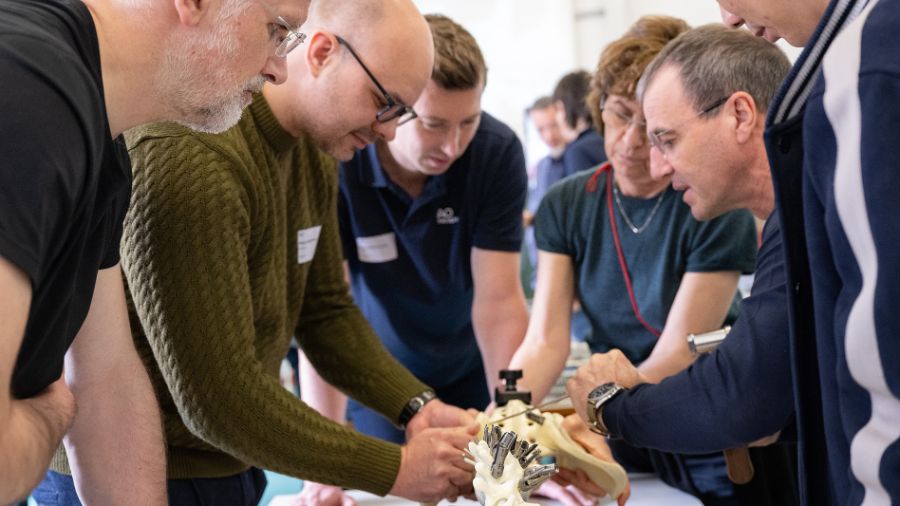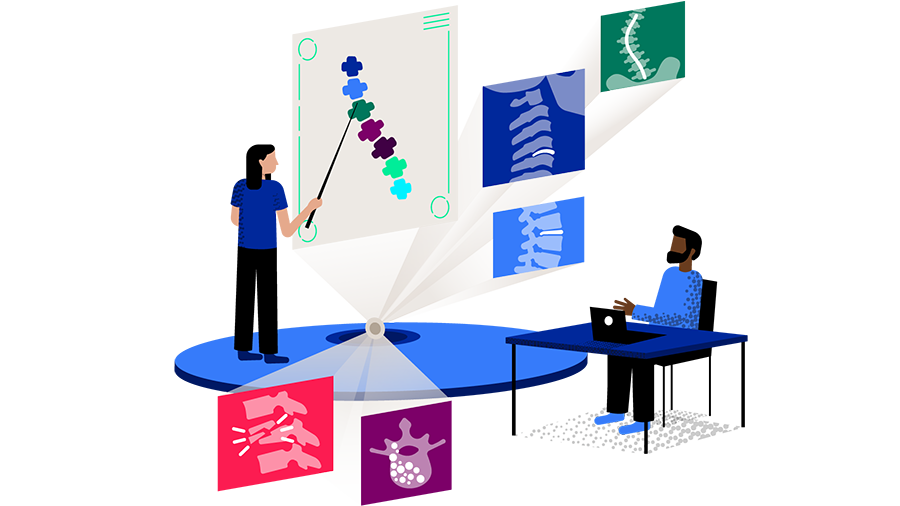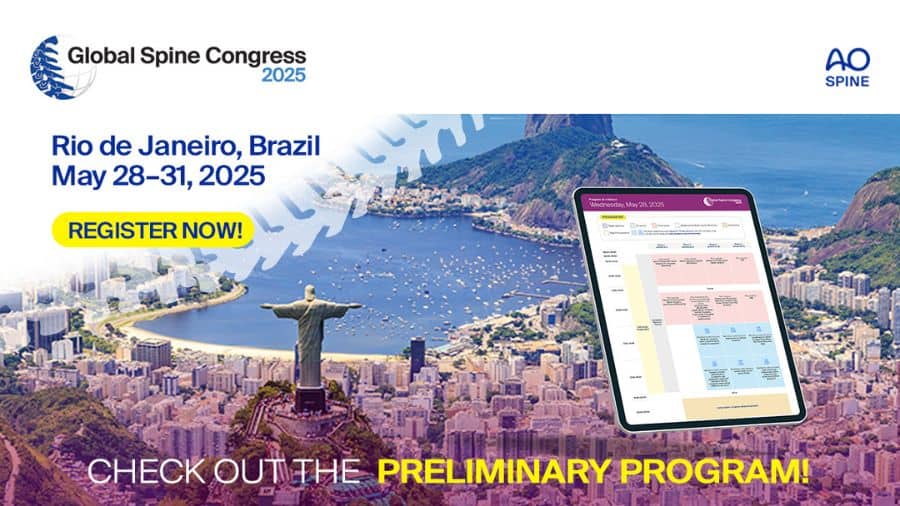A game of chess: surgical strategies for the treatment of congenital scoliosis
BY PROF ALPASLAN ŞENKÖYLÜ

Congenital scoliosis is a challenging spinal deformity, requiring a careful balance between early correction and growth management over time. Early treatment can have very positive outcomes, but surgeons must also consider the physical and emotional impact of treatments for children and adolescents as well as for their parents. Dr Alpaslan Şenköylü shares his insights, highlighting the fascinating case of two young brothers with the condition.
-
Read the quick summary:
- Prof Alpaslan Şenköylü shares insights on congenital scoliosis treatment with a rare case of siblings, highlighting early intervention and surgical strategies.
- Early diagnosis and intervention are key, with a focus on growth management and a multidisciplinary approach for long-term success in scoliosis treatment.
- Current research and development focus is on growth friendly treatment methods, refining personalized treatment plans, and improving consultation for better informed decisions.
Disclaimer: The article represents the opinion of individual authors exclusively and not necessarily the opinion of AO or its clinical specialties.
Congenital scoliosis generally presents alongside other syndromes, such as VATER Syndrome (Vertebra, Anus, Trachea, Esophagus, and Renal Syndrome), but in many cases, there is no associated chromosomal or genetic problem. This was the case with two really interesting patients I treated, who were actually siblings. The brothers shared a very similar congenital deformity and came to me when the youngest was two years old and the eldest was six. We very seldom see cases like this – I haven’t found it before in any literature – and we couldn’t find any genetic disorder linking the siblings.
The boys both had contralateral hemivertebra, but with differing degrees of severity, and I followed different treatment strategies for the two patients. The younger boy had a hemivertebra in the middle of the lumbar spine, at L-2, and another in the lower thoracic spine around T-10. The older patient had similar deformity pattern with contralateral lumbar and thoracic hemivertebrae. These patients live in a rural area, otherwise it is likely that the spinal deformity would have been picked up at an earlier stage. Congenital scoliosis can cause a severe deformity of the spine, leading to problems such as respiratory insufficiency and neural impairment.
When to use growing rods vs hemivertebrectomy
For these kinds of local congenital deformities, we generally tackle the case at a young age. We are often able to solve the problem with hemivertebrectomy and a short fixation one level above and one level below the resected hemivertebra. As we know, these are growing spines that are not yet mature, so we do not want to jeopardize the chest volume and lung development. This makes it very important that we intervene as early as we can.
In the case of these brothers, the older brother’s deformity was relatively well controlled, and upper curvature was quite mild, whereas both curves of younger boy were high magnitude. For the younger sibling I was able to excise both hemivertebrae. With localized problems like this, say two or maximum three segments, we are often able to perform a short segment fusion and excision. If we were to wait for excision of the hemivertebra for a long time, we may end up with a reciprocal change in spinal column and necessity of long fusion construct. By taking action earlier we can arrive at a solution with very limited surgeries and without jeopardizing their maturation and growth.
However, some patients have multiple congenital deformities, including as many as seven to ten segments. In very long curvatures like those we will consider more growth-friendly techniques, such as a growing rod. The growing rod is effective in protecting lung volume and thoracic cage volume, but it does need to be lengthened every six to nine months.
Surgical revision may be necessary as patient reaches adolescence
At the follow-up scans, we found that the younger sibling had recovered very well, and his spine was well aligned. For the older brother, I only removed one hemivertebra, and decided to follow the progress of the other. At the follow-up scans he is not so well aligned - in fact the upper thoracic vertebra is totally unbalanced, creating a deterioration of the curvature in the thoracic part. This is clearly evident in the radiographs but in terms of clinical appearance, he looks fine as you can see in the picture.
At that point, I talk to the patient and offer a surgical revision. In this case, because the boy appears to be well balanced, they decide it’s not needed, but I will still follow how this case progresses over a period of 10 years. If there is more deterioration, we may have to consider another revision surgery.
There are two spurs during growth: While we observe the first one at around five-year of age and the second one is seen just before the adolescent period. That is why we need to very much careful about these two growth spurs. I always explain to patients that when it comes to a growing spine, it is kind of like playing a game of chess. I like to use this metaphor because I think it captures the complexity. The spinal column will take one action, make one move, and as surgeons we plan our next move to make the correction.
I spend a lot of time with my patients explaining the various treatment options. The surgical treatment of congenital scoliosis is one of the most extensive surgeries in the field, so we take a multidisciplinary approach. The potential complications can be frightening, such as neural injury or pulmonary complications. Our anesthesia and neuromonitoring teams are incredibly skillful in preventing such occurrences.
Growing rods could offer less invasive treatment
The most common postoperative risks are late infection or implant problems. If we acquired insufficient fusion in surgery, we could see implant pull-outs or with rod or screw breaks. A rod break is a fairly typical complication because you have upper and lower fixation with nothing in between, so it’s biomechanically weak.
One promising innovation in the field is the development of magnetically-controlled growing rods, which can be adjusted using a small machine externally to lengthen the rod as the patient grows. This has potential to prevent the need for so many repeat surgeries, but the company who produces them has had issues with debris coming out into the body over time, so they don’t recommend keeping them in the body for more than two years. As a result, I have reverted to conventional growing rods, but I hope to see more development in this field in the future.
The ongoing growth of the spine and trunk is an ever-present challenge in congenital scoliosis treatment. It’s important to factor in growth velocity in young patients. Sometimes a child will present with a mild curvature that does not appear to need treatment, but we have to be mindful of growth spurt ages, which are generally around five and then pre-adolescent, around 10 or 11 as I mentioned before.
Extensive patient and family counselling is critical
It’s important to explain the growth velocity issue to parents, to help them make an informed decision about potential deterioration and how to manage it. A lot of the time, parents actually want to take quite a radical surgical solution. This is because they don’t want their child to have to spend so much of their lives in a brace. Although brace is useless for the congenital cases, it can be used in selected cases as time buying strategy. The brace has to be worn for 24 hours, including when the child is at school and even when they’re asleep. It can be very difficult to cope with this, especially if the patient is pre-adolescent, and some parents find they have to really fight with their kids. We recently developed a stigmatization score for scoliosis treatment, and the stigma is very high for brace treatments. We are currently working to get validation of English version of stigma score so that it can be applied globally to inform treatment plans.
Happily, for these young boys, the younger one now has strong alignment and the older brother does not appear to have too severe a clinical deformity, although we will keep a watch on it. My advice for other surgeons in treating congenital scoliosis is to counsel the patients really well, and ensure they are fully included in the decision-making process. When we consider our treatments it’s important to think not about what they need today, but what they may be dealing with in the future, in 10 or even 15 years. If the deformity is left unchecked into adulthood, the surgical treatment is extremely complex.
Therefore, in our surgical game of chess, we need to think several moves ahead.
Alpaslan Şenköylü presented the complex case of two brothers with congenital spinal deformities on AO TV in 2024. He discussed his approach to planning and reviewed challenges associated with treating this condition, as well as talking through the results and sharing his advice to spine surgeons facing such a rare and complex case. Watch the full recording of the Complex Spine Case in Congenital Deformity on AO TV.
About the author:
Professor Alpaslan Şenköylü, MD, is part-time professor and head of the spine team at Gazi University Department of Orthopaedics and Traumatology in Turkey. He fulfilled his residency at Gazi University and completed his clinical spine fellowship under Professors Keith Luk and Kenneth Cheung in Hong Kong University. He has been a full professor in Gazi University since 2013 and a spine surgery consultant in Liv Hospital-Istanbul and in Medicana International Hospital-Ankara.
Şenköylü's clinical and research interest is spine surgery including complex deformities, trauma, tumors, and degenerative conditions. He has published more than 100 peer-reviewed papers and has been serving as Spine Section Editor in the Journal of Orthopaedic Surgery and Acta Orthopaedica et Traumatologica Turcica. Professor Şenköylü is the editor of a book entitled “Essentials of Spine Surgery” (Springer, 2022).
Şenköylü is active in international organizations such as Scoliosis Research Society, Eurospine, AO Spine, and serving in various governance positions, as board member, committee chair, task force member, regional educational trainer, course chair, and faculty for these organizations. Most recently, Senkoylu was elected as the Chair of AO Spine European and South African Board.
You might also be interested in:
AO Spine deformity courses
Unlock the path to mastering spine deformity surgery with AO’s trusted education and award-winning clinical tools.
Global Spine Diploma
The GSD Program is the first globally developed, ultimate, and systematic spine surgery training pathway for recently graduated orthopedic and neurosurgeons.
Global Spine Congress (GSC)
With over 2,000 spine experts coming together from around the world, the GSC is an event you won’t want to miss.
AO ASD Patient profile
AO Spine Adult Spinal Deformity Patient Profile allows clinicians to systematically consider relevant factors that could contribute to optimal management of the condition.


